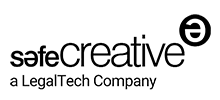The development of a cutting chisel from prehistoric (bronze ) to classical period (Carbonized iron).
Every step is based on previous errors.
Every step is based on previous errors.
© By the author. Read Klimt02.net Copyright.

This article compiles the thoughts and conclusions from the studies and research of the last 10 years by Akis Goumas and a group of archaeologists on the study of ancient artefacts.
-

Isabel Honey Coles. Edinburgh College of Art. New Talents Award Nominee 2025
17Dec2025 -

Margarete Lux. Düsseldorf University of Applied Sciences. Peter Behrens School of Arts, New Craft Object Design. New Ta...
17Dec2025 -

Kristina Felicia Vilensten. HDK-Valand Academy of Art and Design. New Talents Award Nominee 2025
15Dec2025 -

Janine Fox. K2 Academy of Contemporary Jewellery Ltd. New Talents Award Nominee 2025
09Dec2025 -

Create Awareness with Jewelry
09Dec2025 -

Anneleen Heirbaut. Royal Academy of Fine Arts Antwerp. Artesis Plantijn University College. New Talent Award Nominee 202...
08Dec2025 -

Black Dove #1 by Yael Friedman. Future Classic by Anja Eichler
05Dec2025 -

Weaving Resistance. Feminist Stories in Metal by Yuanxing Lin
03Dec2025 -

Narrative Jewellery: Visual Snapshots and Storytelling. Spotlight Artworks by Klimt02
28Nov2025 -

Elisabeth Pira. PXL-MAD School of Arts. New Talents Award Nominee 2025
24Nov2025 -

Mr Hamilton after Skirving. Future Classic by Nichka Marobin
21Nov2025 -

Meet the Jury Members of the New Talents Award 2025. The Annual Recognition Supporting Graduates and Schools.
19Nov2025 -

Echoes in Stone: Rings Celebrating Humanity’s First Tools
13Nov2025 -

Embracing AI Without Losing the Muse
11Nov2025 -

From Tool to Material of Action: A Creative Paradigm in Contemporary Jewelry
29Oct2025













